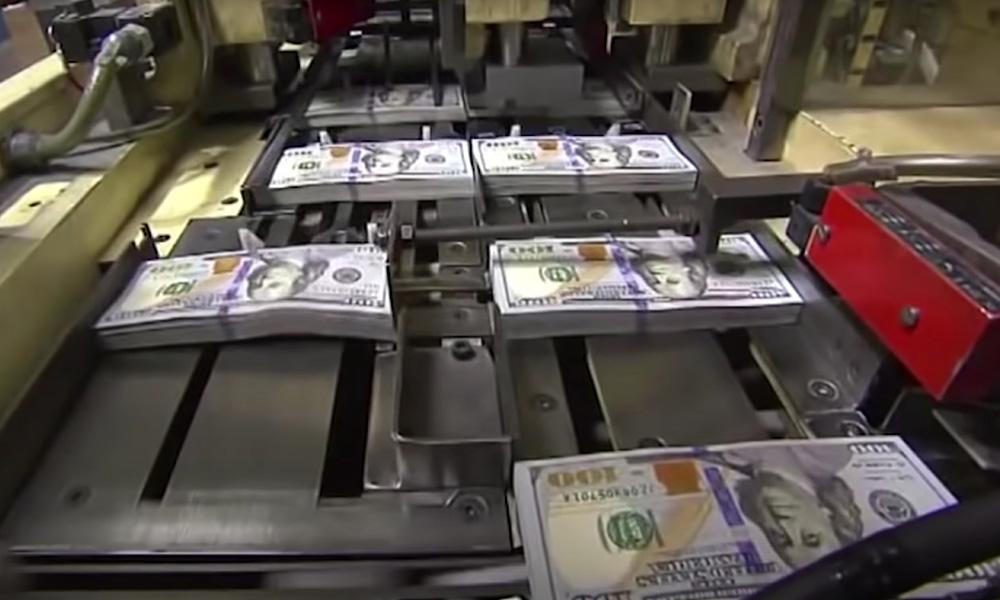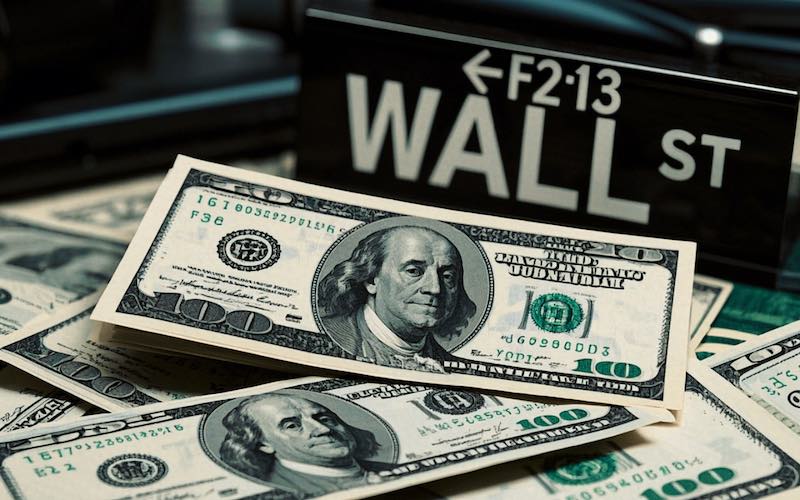The Middle East crisis and Powell's inflation warning triggered the foreign exchange market, and the US dollar rebounded to a one-week high
2025-06-19 14:54:26

As the Middle East crisis escalates, the US dollar becomes the first choice for safe havens
Geopolitical tensions in the Middle East have escalated sharply in recent days, becoming an important driving force for the rise of the US dollar. The conflict between Israel and Iran has continued for the seventh day, and the further escalation of the conflict has caused market concerns about instability in the wider region. In particular, speculation that the United States may intervene in Israel's military operations against Iran's nuclear facilities has made global investors uneasy. It is reported that US officials are preparing for a possible strike against Iran in the coming days. This news directly puts pressure on risk-sensitive currencies, while the US dollar strengthens rapidly due to safe-haven demand.
At the beginning of the Asian trading session, the market was relatively calm, but as geopolitical news fermented, the US dollar rose against all major currencies. The Australian dollar fell 0.74% to $0.6459, the lowest in nearly two weeks; the New Zealand dollar fell 1% to $0.5963, the lowest in two and a half weeks; the Korean won also fell 0.78% at one point, and emerging market currencies were generally under pressure. The exchange rate of the US dollar against the yen, euro and Swiss franc also rose significantly. The US dollar index rose 0.3% to 99.15, the highest in nearly a week, and is expected to record a 0.9% increase this week, the strongest single-week performance since late January.
Market analysts pointed out that geopolitical uncertainty has caused investors to quickly adjust their strategies, and the safe-haven property of the US dollar has regained favor. Matt Simpson, senior analyst at City Index, said: "The time is ripe for short-covering in the US dollar, especially if the United States is really involved in the Middle East conflict, the upward momentum of the US dollar will be further enhanced." Christopher Wong, foreign exchange strategist at OCBC Bank, also pointed out that geopolitical concerns have overshadowed the impact of the Fed's policies, and risk aversion has dominated the market, creating significant pressure on risk-sensitive currencies.
In addition, the U.S. market was closed for the Juneteenth federal holiday, and the reduced market liquidity further amplified price fluctuations. The euro hit a one-week low of $1.1445, down 0.3%, and is expected to fall 0.8% this week, the largest weekly drop since February. The yen was once reported at 145.35 yen per dollar, showing the strong position of the dollar.
Powell's inflation warning caused market shock
In addition to geopolitical factors, the latest remarks by Federal Reserve Chairman Powell also added momentum to the dollar's rise. The Fed decided to keep interest rates unchanged at its meeting on Wednesday and hinted that borrowing costs could fall this year. However, Powell clearly warned at a press conference that the Trump administration's tariff policy would bring "quite high" inflationary pressure, which exacerbated market concerns about the outlook for the U.S. economy.
Powell pointed out that the cost of tariffs will eventually be partially passed on to consumers, causing commodity prices to rebound in the summer. He stressed: "Businesses have made it clear that tariffs will push up costs, and historical data also proves this." This remark highlights the complex situation of the Federal Reserve in dealing with the dual challenges of tariff policy and geopolitical risks. The market's uncertainty about the trend of US interest rates has further intensified, and investors have begun to reassess the Fed's path of interest rate cuts.
Although the market generally expects two 25 basis point rate cuts this year, most likely in September and December, analysts are cautious about this. ING's analyst team believes that the expectation of a rate cut in September may be too early, and the Fed will not easily adopt an easing policy under inflationary pressure. Ray Sharma-Ong, head of multi-asset investment solutions in Southeast Asia at Aberdeen Investments, said that considering the uncertainty of trade policy and economic outlook, the Fed may only cut interest rates once this year, or even remain completely on hold.
Global central bank meeting attracts much attention
At the same time, policy decisions of other major central banks around the world have also added uncertainty to the foreign exchange market. The Bank of England, the Swedish Central Bank and the Norwegian Central Bank held meetings on Thursday, and the market is closely watching their policy trends. The pound fell 0.26% against the US dollar to $1.3382, a new low in nearly a month, and the market generally expects the Bank of England to keep interest rates unchanged. The Swiss franc was once quoted at 0.8214 Swiss francs per dollar before the Swiss National Bank's policy decision, and the Norwegian Central Bank's decision will also be announced later in the day. The policy orientations of these central banks will have a profound impact on the global currency market, further affecting the relative strength of the US dollar.
Summary: Multiple drivers behind the dollar rebound
In summary, the strong rebound of the US dollar on Thursday is the result of multiple factors. The escalation of the geopolitical crisis in the Middle East has caused investors to flock to the US dollar, a traditional safe-haven asset, while Federal Reserve Chairman Powell's warning about tariff-induced inflation has further ignited market concerns about the US economic outlook. At the same time, the policy meetings of major central banks around the world have added more uncertainty to the market. Against this backdrop, the US dollar index is expected to record its strongest single-week performance in nearly five months, demonstrating its important position in the global financial market.
At 14:53 Beijing time, the US dollar index is currently at 99.02.
- Risk Warning and Disclaimer
- The market involves risk, and trading may not be suitable for all investors. This article is for reference only and does not constitute personal investment advice, nor does it take into account certain users’ specific investment objectives, financial situation, or other needs. Any investment decisions made based on this information are at your own risk.










